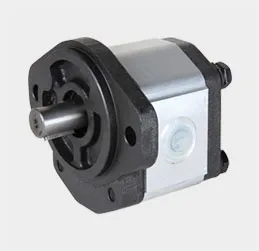die casting parameters
Die Casting Parameters A Comprehensive Overview
Die casting is a widely used manufacturing process that involves forcing molten metal into a mold cavity under high pressure. This method is favored for its ability to produce complex shapes with high precision and minimal waste. However, the quality of the final product is heavily influenced by several crucial parameters during the die casting process. In this article, we will explore the key parameters that affect quality, production efficiency, and overall cost.
1. Temperature Control
One of the most critical parameters in die casting is the temperature of both the molten metal and the die. The melting temperature of the metal must be precisely controlled to ensure proper flow and filling of the mold. For instance, if the metal is too hot, it may lead to oxidation and other defects, while a temperature that is too low can cause incomplete filling and surface imperfections. The die itself must also be heated or cooled appropriately to enhance the metallurgical properties of the final product and to minimize defects like porosity and thermal cracking.
2. Injection Pressure and Speed
The injection pressure refers to the force used to drive the molten metal into the mold cavity. Higher injection pressures generally lead to better fill and reduced shrinkage but can also increase the likelihood of defects such as turbulence or air entrapment. Similarly, the injection speed, or how fast the metal is injected into the die, must be adjusted to ensure that the metal fills the cavity completely before solidifying. Balancing these two parameters is crucial for optimizing product quality and minimizing production time.
3. Cooling Rate
die casting parameters

After the molten metal has filled the mold, it begins to cool and solidify. The cooling rate is influenced by several factors, including the temperature of the die and the properties of the metal being used. A controlled cooling process is essential to achieve uniform properties across the cast part. Rapid cooling can lead to brittleness, while too slow cooling might result in defects like excessive warping or dimensional inaccuracies. Engineers must carefully design cooling channels within the die to manage these rates effectively.
4. Die Design and Material
The design of the die itself plays a pivotal role in the die casting process. Factors such as the complexity of the part, draft angles for ease of removal, and the layout of gates and vents can significantly influence production efficiency and product quality. Furthermore, the material used for making the die must be chosen based on its thermal conductivity and resistance to wear. Typically made from high-strength steel or other alloys, the die material needs to withstand the high temperatures and pressures without deforming.
5. Cycle Times
Cycle time, or the total time taken to complete one die casting process, is an essential factor for production efficiency. It includes the time taken for filling, cooling, and ejection of the cast part. Reducing cycle times without compromising quality is key to improving productivity. Techniques such as optimizing die design, controlling temperatures, and enhancing automation can significantly contribute to shorter cycle times.
Conclusion
In summary, the success of the die casting process hinges on a delicate balance of various parameters, including temperature control, injection pressure and speed, cooling rates, die design, and cycle times. Optimizing these factors requires a combination of engineering expertise, experience, and technological advancements. By understanding and meticulously controlling these parameters, manufacturers can produce high-quality castings that meet stringent industry standards while optimizing production efficiency and cost-effectiveness. As technology continues to evolve, the die casting process will likewise improve, paving the way for innovations in numerous industries such as automotive, aerospace, and consumer goods.
-
Top Extras Casting Solutions Die Casting and Sand Casting Experts High-Quality Casting and Die Casting ServicesNewsJun.10,2025
-
Top SS Casting Manufacturer Aluminum Die Casting Manufacturer China Precision Die Casting Company SupplierNewsJun.10,2025
-
High-Quality Brass Casting Sand for Precision Sand Casting Brass at HomeNewsJun.10,2025
-
Affordable Aluminum Sand Casting Solutions Custom PartsNewsJun.09,2025
-
High-Quality China Sand Casting Services Cost-Effective & ReliableNewsJun.09,2025
-
Premium Hot Stamping Parts Durable Plastic Decor SolutionsNewsJun.09,2025















